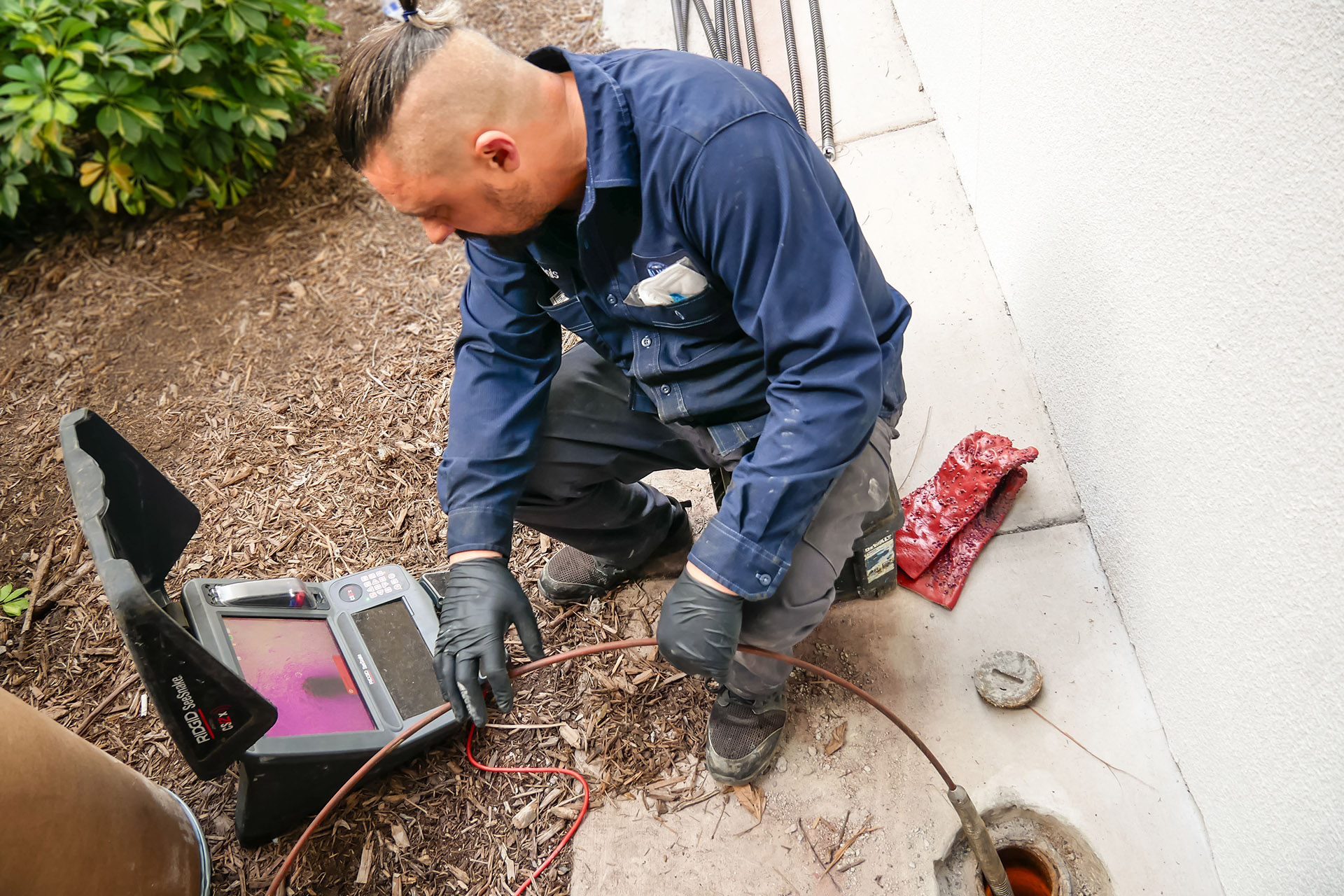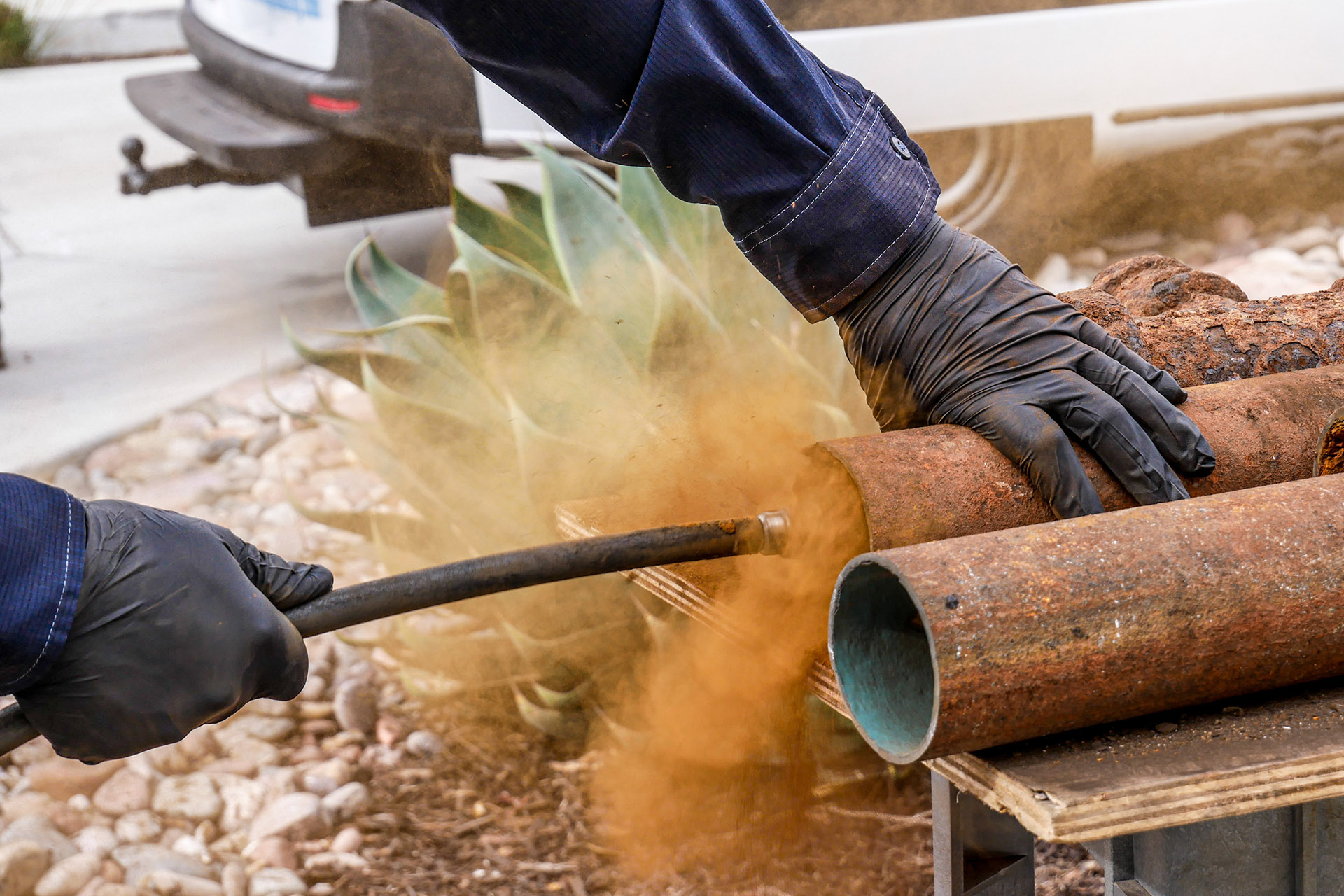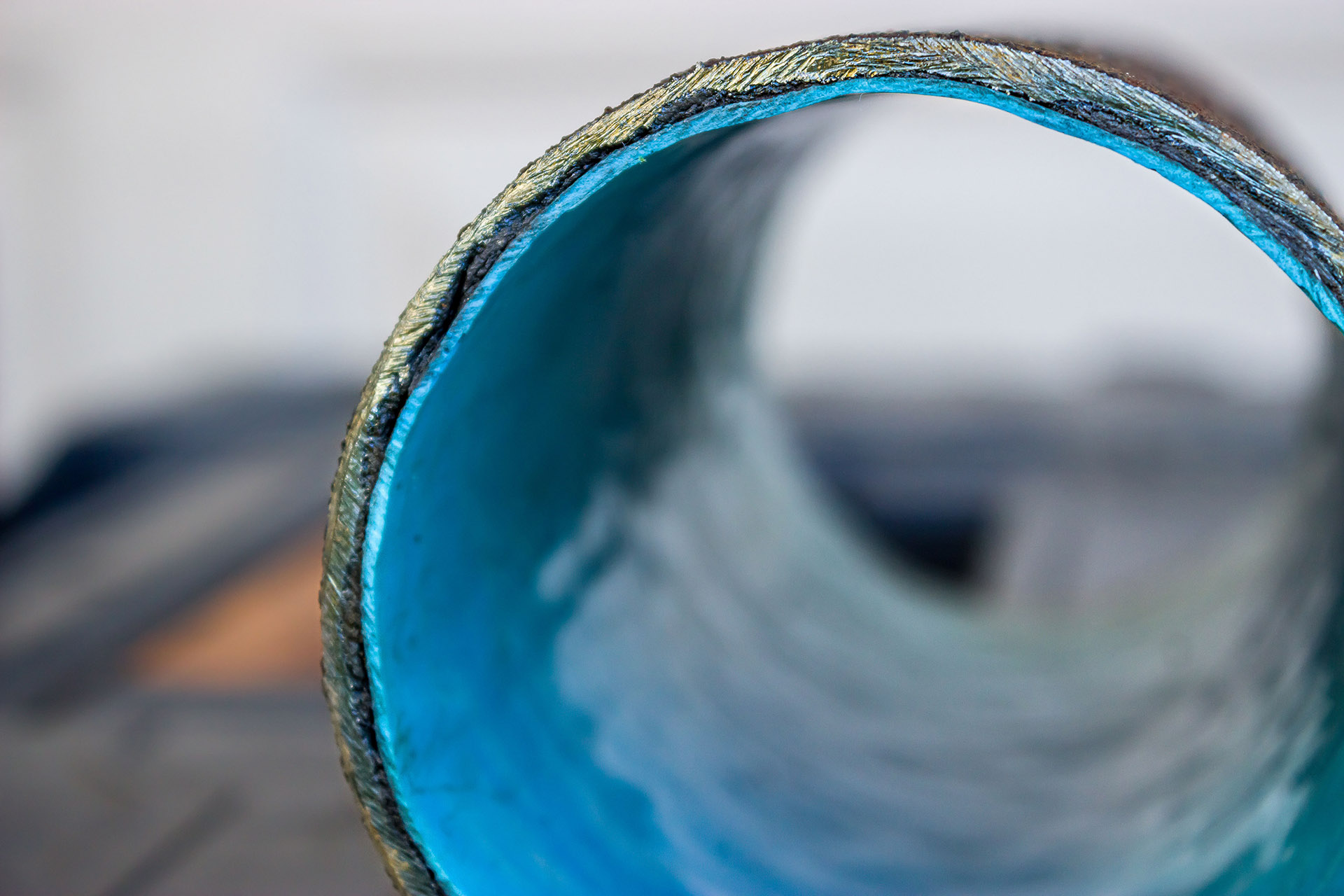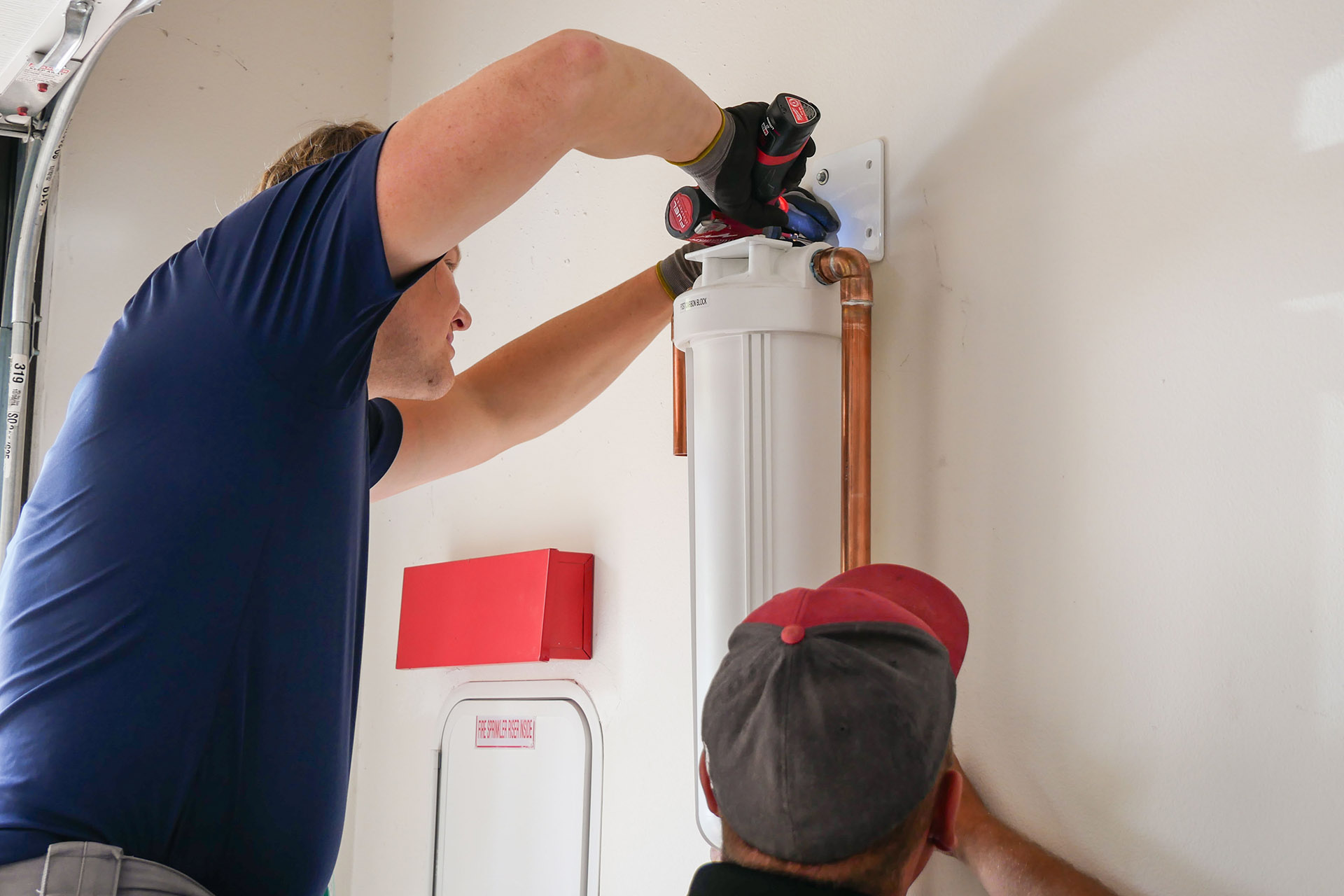Sewer system backups are more than just plumbing inconveniences—they can lead to extensive property damage, health hazards, and environmental concerns. In San Diego, challenges such as aging infrastructure, coastal geography, and improper waste disposal contribute to frequent sewer problems for both homeowners and businesses. Left unaddressed, these issues can escalate quickly, causing costly repairs and disruptions to daily life.
Below are the common causes, signs, and Almco Plumbing solutions for sewer backups that are essential to maintaining a safe and functional home.
Contents
- Common Causes of Sewer Backups in San Diego County
- Signs You Might Have Sewer System Backups
- Preventive Measures for Sewer System Backups
- Sewer System Backups Procedure Step-by-Step
- DIY Sewer Backups Repair vs. Professional Service: Pros & Cons
- Almco Plumbing’s Pricing for Sewer Backups Service
- Frequently Asked Questions (FAQ)
Common Causes of Sewer Backups in San Diego County
A combination of environmental, structural, and behavioral factors contribute to San Diego County’s plumbing problems. Understanding these causes helps homeowners address and prevent future issues.
- Aging Infrastructure. Many areas in San Diego County feature older neighborhoods with aging sewer systems. These systems often use materials such as cast iron or clay, which deteriorate over time, allowing roots to infiltrate the pipes. Cracks, corrosion, and collapses in these pipes are common, creating blockages or openings that invite further complications.
- Tree Root Intrusion. Old sewer lines often develop cracks, which provide a water source for roots in San Diego’s dry climate. Even a small leak in the sewer pipe can distribute a tiny amount of water, along with minerals, which encourages roots to grow rapidly and invade the pipe. Once roots invade, they trap debris, exacerbating the blockage.
- Sewer System Belly. The most common “belly” problem occurs with ABS pipes when a contractor installs the pipe but fails to properly bed and compact the trench. Once the pipe is in place and soil is added on top, the weight of the soil pushes the pipe down, creating a belly. While belly issues are less common with cast iron pipes, they can still occur when two pipes are connected and placed on the ground. The belly in ABS pipe cannot exceed 5 feet, and in cast iron pipes, it should not exceed 10 feet.
- Improper Waste Disposal. A major contributor to sewer backups is the disposal of inappropriate materials down the drain. Items such as grease, food scraps, and so-called “flushable” wipes can build up in pipes and cause clogs. Over time, these materials exacerbate existing weaknesses in aging systems, leading to backups. Avoid putting eggshells, onion skins, or grease down the kitchen drain. You can dispose of food waste in the drain only if you have ABS—not cast iron—pipes, and you are running a mix of 80% water and 20% food waste. However, we recommend using a garbage disposal for most food waste.
- Cast Iron Kitchen Drain Problem. Cast iron kitchen drains that are over 50 years old often accumulate food waste, grease, and soap. Over time, these materials form a stone-like scale, often exceeding half an inch in thickness and causing a lot of sludge buildup.
- Tub, Shower, or Sink Drain Clogs. Most tub and shower clogs are caused by hair caught in the drain. Many bathroom sink pop-up drains become clogged with hair, soap, cream, and toothpaste residue.
- Storm Water Overflows. Although San Diego experiences a relatively dry climate, heavy rains during the wet season can overwhelm sewer systems. In areas with combined storm and sanitary sewers, this can lead to backups into homes. These overflows are especially problematic in areas with aging infrastructure.
- Soil Shifting & Earth Movement. San Diego’s unique geology, including canyons and fault lines, can cause soil movement over time. This natural shifting can misalign or damage underground pipes, reducing their efficiency and increasing the likelihood of backups.
Addressing these common causes often requires professional evaluation and regular maintenance. Inspections and proper waste management are critical to minimizing the risk of sewer backups and maintaining a functioning plumbing system.
Signs You Might Have Sewer System Backups
Recognizing the early signs of a sewer backup is crucial to preventing extensive damage and costly repairs. San Diego homeowners should be aware of the following indicators of a potential problem:
- Slow Drainage Through Multiple Fixtures. If sinks, showers, and bathtubs are draining slower than usual, especially in different parts of the house, it could be a sign of a main line clog. Localized clogs typically affect a single drain, while a backup affects multiple fixtures.
- Gurgling or Bubbling Noises. Unusual sounds from plumbing fixtures, such as gurgling in toilets or drains, are often caused by trapped air in the sewer line. This can occur when a blockage prevents water and waste from flowing freely.
- Water Backing Up in Low-Point Drains. Sewage or water backing up into the lowest drains in your home, such as basement floor drains or lower-level showers, is a clear sign of a backup. This occurs when the main sewer line can’t handle the flow and is forced to back up into the home.
- Toilet Performance Problems. If toilets flush slowly, fail to flush completely, or make gurgling noises when other fixtures are used, it is often a sign of a sewer line blockage. Toilets are typically the first to show signs of trouble when the main line is compromised.
- Wet Spots in the Yard. Unexpected wet spots, foul-smelling puddles, or lush patches of grass in the yard may indicate a break or blockage in the sewer line, causing waste to seep into the surrounding soil.
- Recurring Drain Problems. If you experience frequent clogged drains, even after cleaning them, the underlying issue may be with the sewer system. Ongoing backups often signal a deeper problem that requires a sewer camera inspection by a professional company like Almco Plumbing.
Ignoring a sewer backup can lead to property damage, health risks, and costly repairs. Regular maintenance and professional inspections are essential to keeping your sewer system running smoothly.
Preventive Measures for Sewer System Backups
Preventing sewer system backups requires a combination of proper maintenance, responsible use, and proactive upgrades. Here are the most important actions you can take to reduce the risk of sewer problems:
- Proper Waste Disposal. Avoid flushing items that don’t break down easily, such as wipes, feminine hygiene products, paper towels, or dental floss. Dispose of grease, oil, and food scraps in the trash—not down the drain. These materials can build up in pipes and cause clogs over time.
- Routine Sewer Line Maintenance. Schedule regular inspections and cleaning of your sewer system to identify and correct problems before they become major issues. Professional cleaning methods, such as hydro-jetting, can remove debris and maintain optimal flow.
- Install a Backwater Sewer Valve. Backwater sewer valves are designed to prevent sewage from backing up into your home when the municipal system is overloaded or backed up. This simple device is especially effective in areas with heavy rainfall or sewer capacity issues.
- Monitor Plumbing Problems. Watch for early signs of sewer problems, such as slow drainage or unusual noises in the pipes. Addressing these issues immediately can prevent more serious blockages or damage.
- Replace Aging Sewer Lines. Older sewer lines made of materials like clay or cast iron are more prone to deterioration. Replacing them with modern, durable materials like PVC can significantly reduce the risk of blockages and backups.
- Installing a Sewer Cleanout. A sewer cleanout provides easy access to the main sewer line for maintenance and emergency clearing. If your home doesn’t already have one, installing a cleanout can save you time and money in the long run.
Implementing these preventative measures not only minimizes the risk of sewer backups but also extends the life of your plumbing system. Regular maintenance and responsible use are essential to maintaining a reliable and efficient sewer system.
Sewer System Backups Procedure Step-by-Step
When dealing with a sewer backup, a clear and systematic approach is essential to resolve the issue efficiently while minimizing damage and risk. Here’s a step-by-step procedure.

A professional plumber typically begins by cleaning the pipe using hydro-jetting or a cable machine. Afterward, a CCTV camera inspection is performed to pinpoint the cause of the backup.

Depending on the cause, plumbing professionals use methods such as hydro-jetting, carbide chains, or chemical treatments to remove the blockage. If severe damage is found, pipe repair or replacement may be required.

A detailed assessment of the sewer system is necessary to identify weaknesses, such as aging pipes or recurring tree root problems. Professionals from plumbing companies, such as Almco Plumbing, may suggest upgrades like backflow prevention valves, epoxy pipe lining, or pipe replacement to prevent future backups.

Plumbers will also assist in scheduling regular sewer line inspections and cleanings to keep the system in optimal condition. Implementing preventive practices, such as proper waste disposal and monitoring water usage, will help ensure the sewer system’s functionality and minimize future risks.
At Almco Plumbing, we handle sewer system backups efficiently and professionally, providing customized solutions tailored to your plumbing needs.
DIY Sewer Backups Repair vs. Professional Service: Pros & Cons
When faced with a sewer backup, homeowners often consider whether to tackle the problem themselves or hire a professional plumber. Both options have their advantages and disadvantages, depending on the complexity of the issue and the homeowner’s skill level.